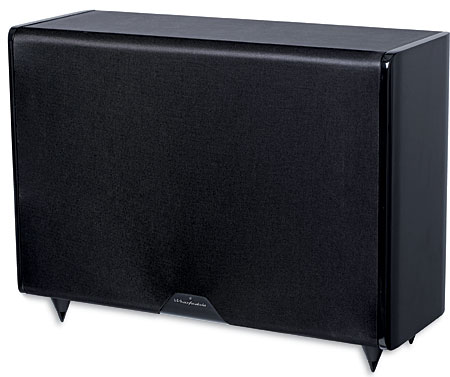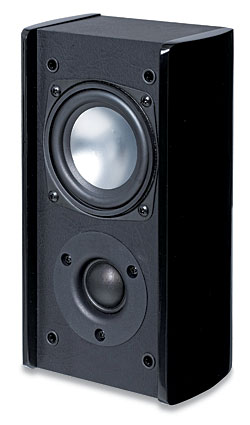Wharfedale Achromatic WA-S1 Speaker System Page 2

My Life in Ruins gives Nia Vardalos another chance to re-create the heartwarming comedy of My Big Fat Greek Wedding. This time, she plays a tour guide who falls in love with her heavily bearded bus driver as they shepherd a zany cast of characters around the treasures of Greek antiquity. Surround effects were minimal, but the snatches of traditional music, with stringed instruments, complemented the beauty of the visuals with sweetness from the fabric-domed tweeters.
Bass Tweaks
As Blu-ray Discs gave way to CDs, I continued to fiddle with the sub and knocked it back from threequarters to two-thirds of its volume control’s range. That may seem minor, but as it often happens with inexpensive subs, the small setting changes made big differences. I didn’t need to adjust the system with the rhythm section, which was excellent by modest sat/sub standards. It
did need adjustment with Bill Morrissey’s voice in one of his
best albums, You’ll Never Get to Heaven. Although it’s frail, his quavering tenor has a resonant bottom end, and too much of it escaped from the sub. With the bass dialed in, I could freely enjoy his shrewd observation, nonjudgmental compassion, and delicate Taylor acoustic guitar.

Blessedly, Robert Cray’s Time Will Tell came in the form of a DualDisc. Of course I played the high-resolution DVD-Audio side. The arrangements held a few surprises. An antiwar song is accompanied by the sounds of boots on the ground that move from front left to right. Another song combines both sitar and string orchestra. Few tracks take advantage of surround as a musical medium, which dissipates one of the advantages of having identically matched drivers all around. However, the voice was equally present in all three front channels. It was warm, supple, human, and believable.
 The classical selection was an untitled album by cellist Sol Gabetta with the Basel Chamber Orchestra in works by Hofmann, Haydn, and Mozart. This fresh RCA/Sony Music recording oddly presents the lead instrument almost solely in the form of reflected sound. This approach sweetens high-frequencyintensive violins, but it can be unduly vague with the cello’s mellower sound. I missed the sensation of bow biting into strings. There also seemed to be
a balance problem with the sub crossover, until I discovered that the Sub level wasn’t loud enough to trigger the sub’s auto-on circuit. This happens with a lot of sat/sub sets. Usually, the problem solves itself in a second or two. Once I hiked the surround processor’s Sub output, it did the trick.
The classical selection was an untitled album by cellist Sol Gabetta with the Basel Chamber Orchestra in works by Hofmann, Haydn, and Mozart. This fresh RCA/Sony Music recording oddly presents the lead instrument almost solely in the form of reflected sound. This approach sweetens high-frequencyintensive violins, but it can be unduly vague with the cello’s mellower sound. I missed the sensation of bow biting into strings. There also seemed to be
a balance problem with the sub crossover, until I discovered that the Sub level wasn’t loud enough to trigger the sub’s auto-on circuit. This happens with a lot of sat/sub sets. Usually, the problem solves itself in a second or two. Once I hiked the surround processor’s Sub output, it did the trick.
You’ll notice that I fiddled with bass levels in both the surround processor and the sub. I could have saved myself a lot of trouble (and presented the product in a less troublesome light) if I had increased the surround processor’s Sub level to somewhere between +2 dB and +4 dB at the outset. This would have solved the auto-on problem and let me focus more of my attention on the sub’s volume control, which is the more appropriate way to perform day-to-day tweaking.
In this sat/sub configuration, the Achromatic speaker system makes an excellent case for Wharfedale as the brand exists today. These speakers are beautifully designed, and they can navigate the subtleties of recordings and movie soundtracks. China is pouring out a lot of loudspeakers these days, but Wharfedale and IAG are really doing it right.






























































